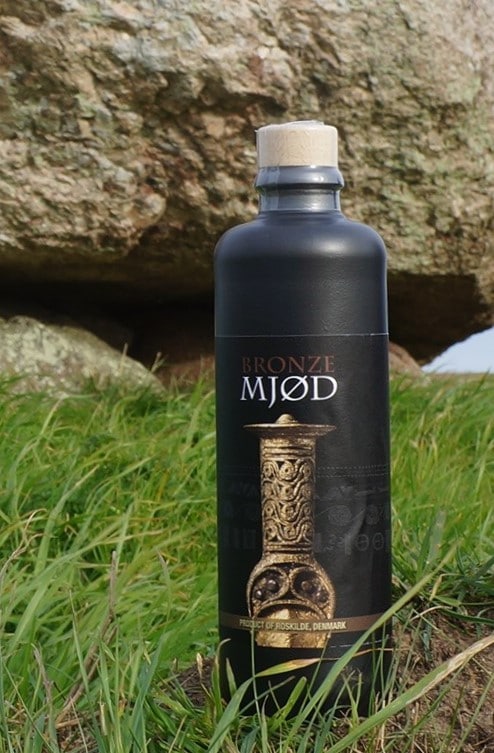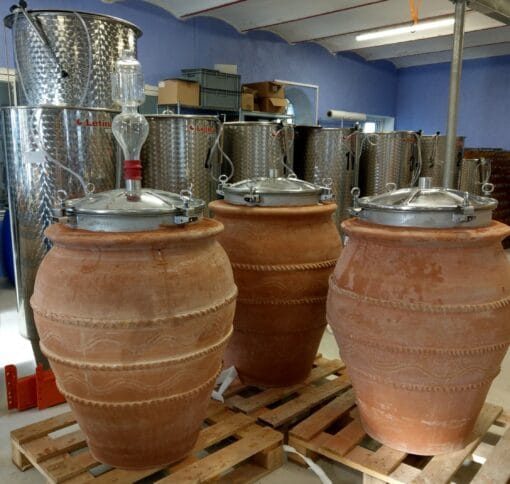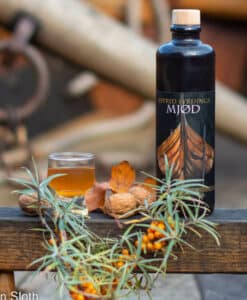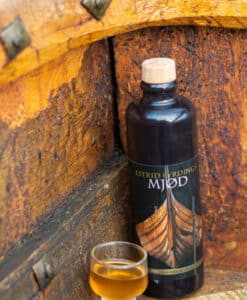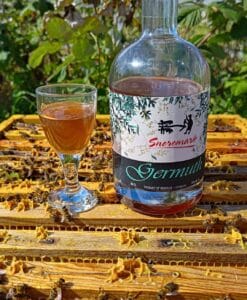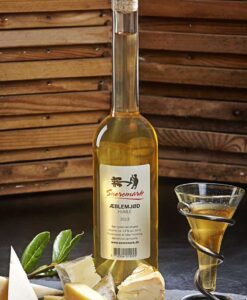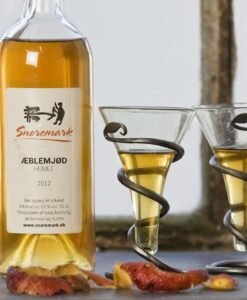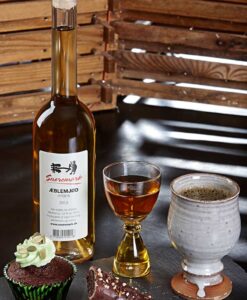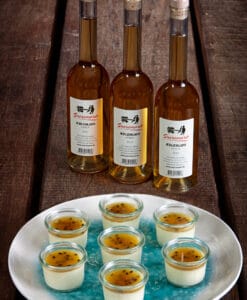In addition to the Danish landscape, there are countless burial mounds were built in the Bronze Age 4,000 years ago. Now it is possible to get an impression of the mead that the ancient people drank when they were to mark major events such as the construction of a burial mound.
The National Museum’s researchers have analyzed dried-up remains from grave gifts that the deceased brought with them on the journey to the afterlife. The analyzes show that it is a mead brewed on linden honey and the bitter plant mead.
In the brewing of this mead, we at Snoremark Meadery have strictly followed to the methods that were available in the Bronze Age. The first batch that can be bought now is brewed on steel barrels, but they will subsequently be brewed on large stone jars coated with beeswax, as was done in ancient times.
Taste
The bronze mead can best be compared to a semi-dry white wine. It has a clear taste of linden honey with notes of eucalyptus and menthol and a good aftertaste from the dark round bitterness of the mead.
Contains 350 cl corresponding to 6 serving glasses
Durability
After opening a bottle, we can guarantee that it can stay in the refrigerator for 3 weeks.
As this is a completely new project, we do not yet have experience with how the bronze mead lasts for long-term storage. Unlike the ancient finds, Snoremark bronze mead is preserved with sulfur, which should theoretically give the same durability as other wines.
Linden honey
Linden honey is one of the few special honey we have in Denmark together with heather honey. The linden honey is collected in July when the linden trees are in bloom. It has a very characteristic aroma and taste of eucalyptus, a little menthol and licorice, which is clearly reflected in the mead brewed on linden honey.
In ancient times, Denmark has been covered by forests with many linden trees. Ancient mead has therefore largely been brewed on mead with linden honey, which has a higher level of acidity and bitter substance than spring and summer honey. Unfortunately, in today’s Denmark there are not so many large areas with linden trees, therefore linden honey is more difficult to obtain and more expensive.
Meadowsweat:
Since ancient times, meadowsweet has been the classic flavoring for mead. The herbs in Snoremark’s apple mead are picked on the farm’s natural areas. The flowers have a sweet aromatic bouquet that in dried form can be used as tea.
Meadowsweat has a high content of salicic acid, which is the painkiller used in aspirin. This may be the reason why, according to the ancient traditions, drinking mead did not cource hangovers.
In the mead, the herb has two purposes, the light bitterness gives it a good taste in the mead and at the same time it is antiseptic and antibacterial and has an important function in cleaning fermentation vessels and protecting the mead from unwanted growth in the form of e.g. mold.
The herb therefore also has healing properties that can be used on wounds and sore places. One study has even shown that it has an effect in the treatment of early stages of cervical cancer. In ancient medical records, meadowsweat is mentioned for the treatment of diarrhea and heartburn.
Bees:
The apple trees on Snoremark are completely dependent on the bees ‘pollination to be able to bear fruit, and we are of course dependent on the bees’ honey for our mead.

